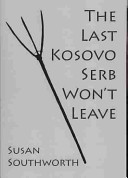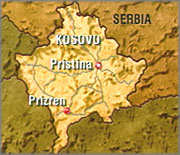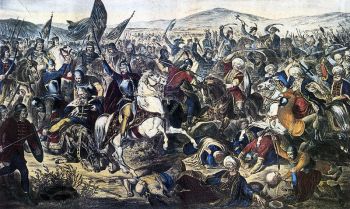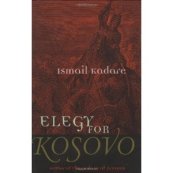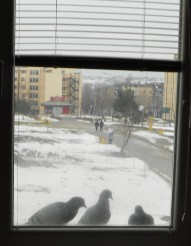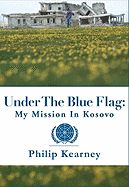April 21, 2012

Sylvia Plath (Source: http:/www.poets.org)
At the beginning of the next session, as I gathered students’ drafts on Lesson, I noted that Sylvia Plath was born a full generation after Richard Wright, but that she died in 1963, a victim of suicide, just three years after Wright’s death. Circulating a picture of Plath, I then asked what they learned in the introduction that made her death hard to understand. Several voices spoke at once, mentioning her marriage to poet Ted Hughes, their two children, her prestigious degree from Smith College, her Fulbright scholarship to Cambridge University, her publications. Next, I asked the painfully obvious question: “Why would a young, attractive wife and mother and successful poet have to take her own life? Does your book offer any help?” Dafina then mentioned the death of Plath’s father when she was only eight, saying that “it seems she never got over the anger and grief.” Then Shkodran mentioned the father’s authoritarian manner, a quality shared by her husband, who also resembled her father. I congratulated both students on their attentive reading and mentioned another key point from the introduction, that the merger of father and husband in the poem makes “Daddy” more than self-expressive, suggesting an attack on all oppressive men, possessors of the phallus, abusers of power.
I then asked that two women, two female voices, read “Daddy” aloud, each taking eight of the sixteen stanzas of the poem. Merita and Edita obliged; we all followed along as they gave voice to this anguished, angry poem. Thanking Merita and Edita for their voices and their daring, I asked the class to think about the images—both visual and auditory—that give the poem its power. “What about in the first two stanzas? What images define the child’s experience of the father’s tyrannical power?” In response, many voices spoke of the “black shoe,” the child smothered in the paternal shoe “like a foot,” afraid to “breathe.” Stressing Plath’s craft, I mentioned the visual intensity she creates with the “shoe,” this specialized form of figurative language, a synecdoche, which allows her to define the whole man by focusing on a cruel, suppressive part. “But does the narrator’s voice sound submissive, defeated?” I asked. Several voices responded with the defiant line, “I have had to kill you.” “What images suggest her contempt for the father?” Ragip responded, saying that she mocks his self-importance by calling him a “bag full of God” with a disgusting, “ghastly,” swollen toe.
Moving to other stanzas, I asked the class if they heard any love mixed in with the anger and contempt. Kadrije said she “used to pray to recover” (l. 14) him, that she tried to kill herself to “get back to you. I thought even the bones would do” (ll. 59-60), and Edita added that she “made a model of you” (l. 64) by marrying Hughes. I praised their answers but wondered why she uses Nazi imagery to describe this man, these men, she loves. Perceptively, Blerta stressed the metaphor: all men become Nazis, and all their women become “Jews,” receptacles for his dominating “root” (32, 23). “Why does she shift to the vampire imagery?” I asked. Besa replied that the blood-sucking imagery further stresses the way men use up women, drain them of life after biting the woman’s “pretty red heart in two” (l. 56). “Does she leave you with this image of victimization?” I asked Besa. She answered by reading the last two stanzas aloud, sounding the anger as the narrator-daughter-wife drives a “stake in your fat black heart” and proclaims, “Daddy, daddy, you bastard, I’m through” (ll. 76, 80). Complimenting Besa’s strong reading, I mentioned again Plath’s craft, her alliterative use of harsh “b” and “d” sounds, the sequence of strong stresses in “fat black heart”; such cacophony, I said, creates the angry tone and complements the violent images of her final rejection of her father.
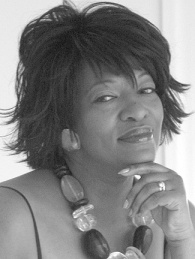
Rita Dove (Source: Rita Dove’s Website (virginia.edu))
Just nine years old when Plath committed suicide, Rita Dove as an adult also wrote about her father, and she did so, according to our text, with the same “friction” that we found in Plath’s poetry (3135). Reminding the class of this claim, I asked, “Where do you see and hear friction in Dove’s ‘Adolescence III,’ which begins with the father’s absence and ends with his presence. What happens in between? What’s going on inside of her as she shares gardening with her mom?” Dafina noted the simile, with the girl keenly aware that, like the tomatoes, she grows “softer, swelling out” (l. 5). “Why does she have to wrap her scarred knees in the second stanza?” I pressed Dafina. She answered quickly, “She also feels the consequence of her hard work, and she wants to cover the scars with fancy old dresses “that once went to big-band dances” (l. 9). Thanking Dafina for her sensitive answers, I asked the class how this ‘friction’ between a hard reality and romantic fantasy plays out in the third stanza. Fidan responded, saying that she stands in “rows of clay and chicken manure” dreaming of a young man who would come, profess his love, and make the “scabs fall away,” until the “father” ends the fantasy (ll. 14-21). “What do you make of the closing image,” I asked Fidan, “carrying his ‘tears in a bowl’ as ‘blood hangs in the pine-soaked air’?” “Maybe the tears show his regret for deserting them, but the blood shows that his return threatens more abuse,” he guessed.
Praising all for their close readings, I then asked if anyone cared to share his or her journaling on suicide or on adolescent memories. Gezim responded first, reading an entertaining account of adolescent sibling rivalries and his great sufferings as the ‘oldest child,’ always having to tend to the younger brothers and getting punished for their pranks. Changing the mood dramatically, Besa read of her opposition to suicide, calling it “weakness,” a choice never justified even in times of immense suffering. To support her view, she described the persecution her Albanian family suffered at the hands of Serbian soldiers in the 1990s, the loss of home, the fear of the ever-present AK-47s. She acknowledged that she thought of suicide then, just to escape the terror, but her parents’ heroic example made her put aside such despairing thoughts.
Seeing that everyone had been as moved to smiles and to deep sadness by this journaling, I thanked the readers for their candor and courage and the listeners for their attentiveness, and then asked everyone to prepare for the next session by reading three more poems packed with complicated memories about parents: Li-Young Lee’s “The Gift,” Louise Glück’s “Appearances,” and Yusef Komunyakaa’s “My Father’s Love Letters.” I also asked the students to prepare a journal entry, either in prose or in poetry, describing their fathers or mothers by using images, not abstractions, just as Plath and Dove had done.




